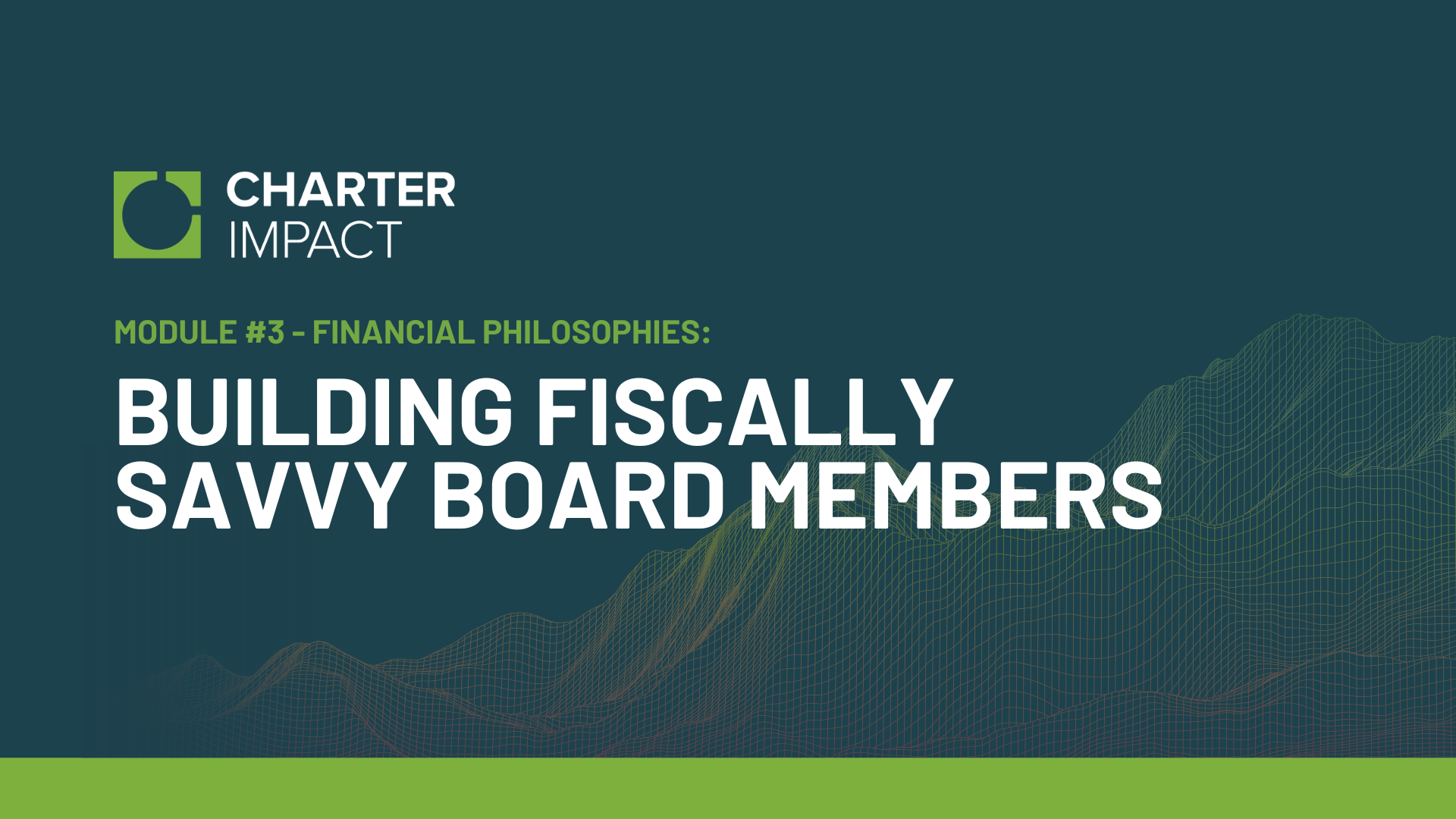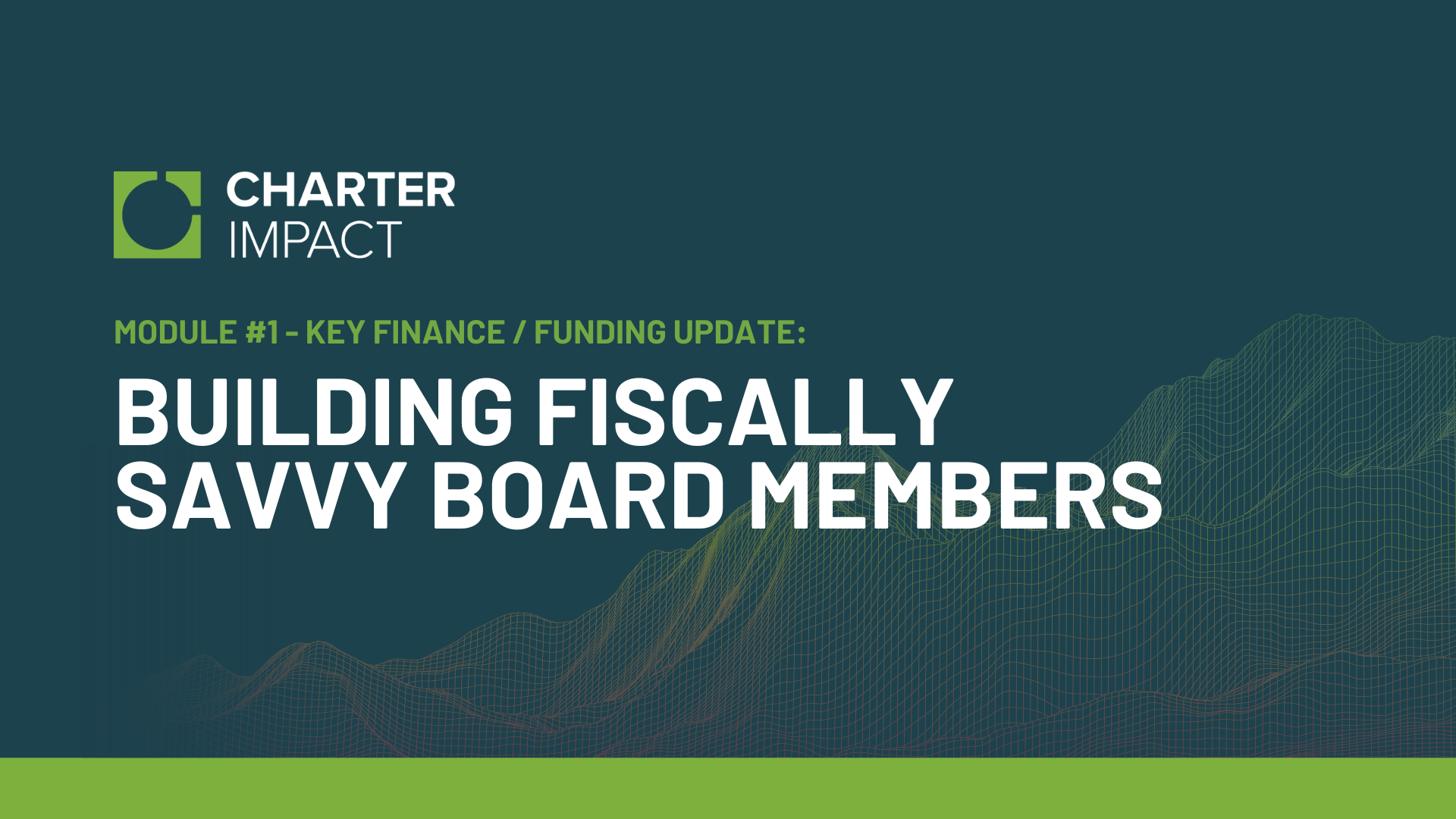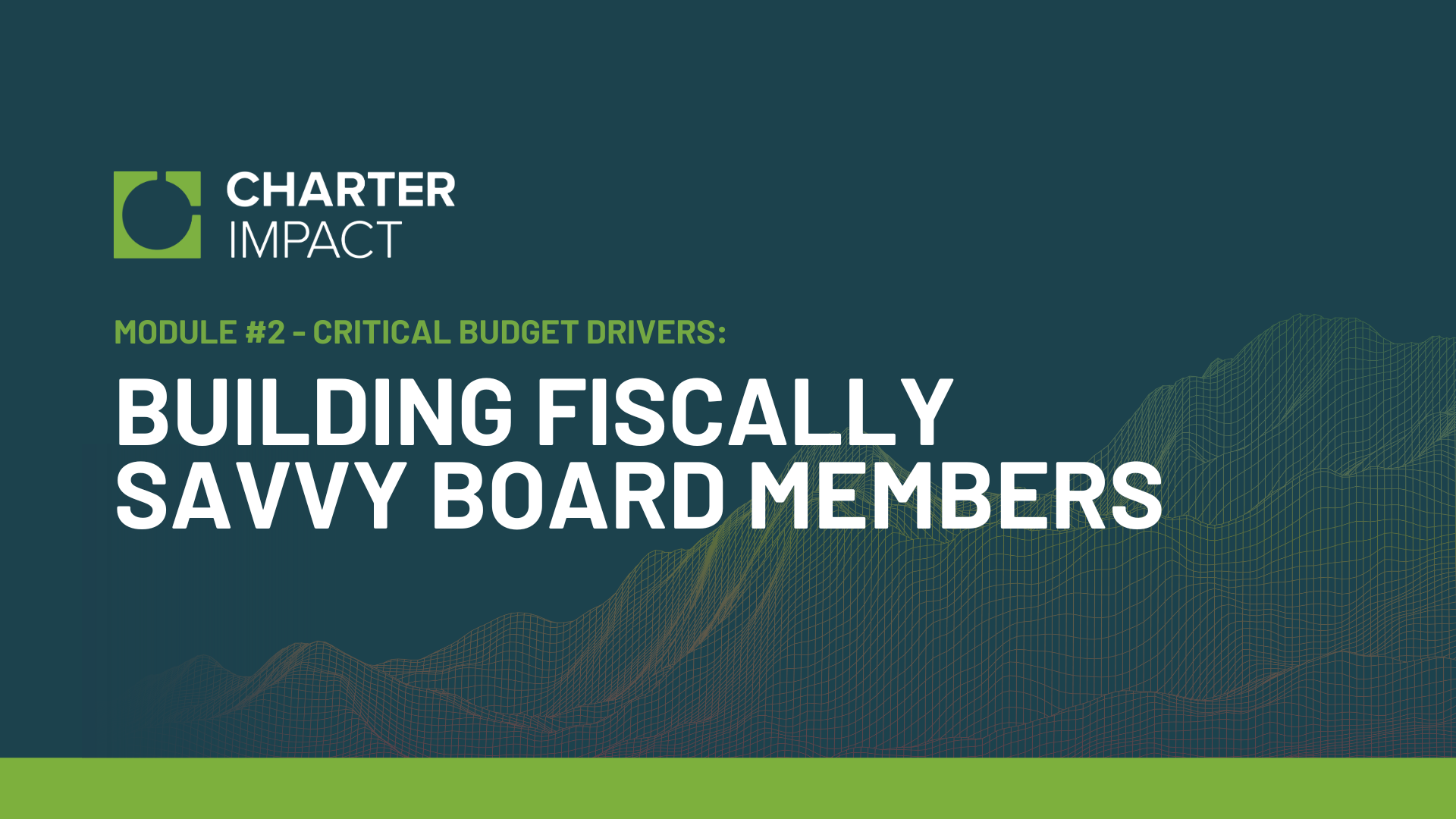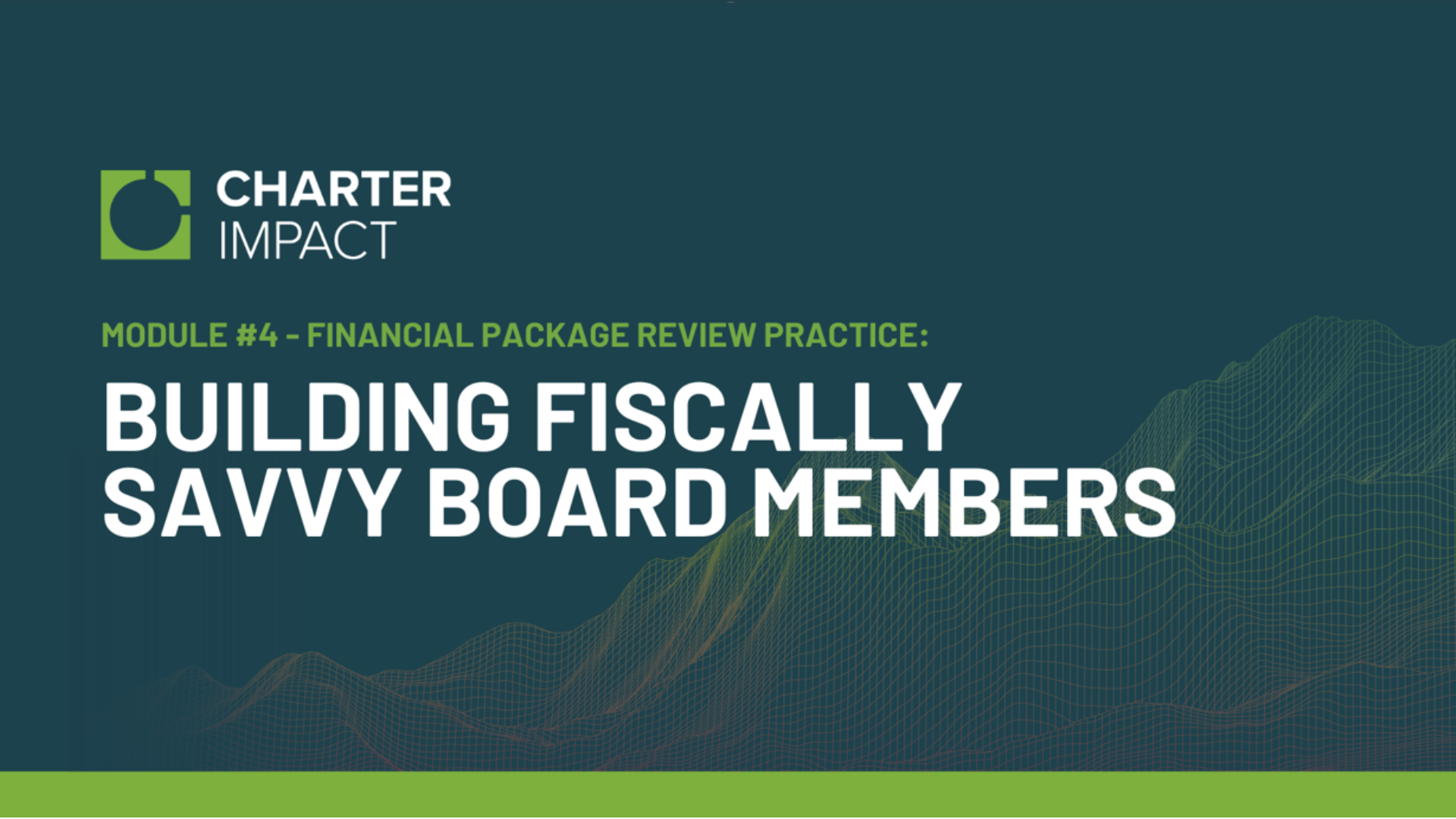Building Fiscally Savvy Board Members
Module #3 | Building Fiscally Savvy Board Members
Welcome to the Building Fiscally Savvy Board Member series! In this module, we're diving into the financial philosophies that guide charter school funding. You'll learn how to align your instructional model with available resources, prioritize expenses, and create a balanced budget that supports your school's vision. We'll explore practical strategies for handling unexpected challenges, maintaining open communication with stakeholders, and ensuring financial decisions reflect your mission.
By the end of this module, you'll be equipped to make confident decisions that keep your school's finances on track. Let's dive in and empower your board leadership today!
To build a balanced and effective budget, it's crucial to involve stakeholders—teachers, staff, board members, and parents—early in the process. Their input helps ensure that the financial plan aligns with the community's priorities and supports the school's mission. Collaboration from the outset can prevent misunderstandings and help all parties understand any necessary cuts or adjustments.
Question 1 of 5
1. What is one of the main goals when creating a charter school's budget?
A) To maximize spending on non-essential items B) To ensure a balanced budget, ideally with a surplus C) To ignore collaboration with stakeholders D) To always start with a deficit2. Why is it important to maintain open communication with all stakeholders about the school's financial status?
A) To avoid sharing bad news B) To keep only parents informed C) To ensure everyone, including staff and board members, is on the same page about financial decisions D) To prevent teachers from knowing budget details3. What should be done if a school cannot afford certain items in the budget?
A) Increase the deficit B) Eliminate them from the budget entirely C) Defer them to another year or consider fundraising D) Purchase them regardless of the cost4. What is the purpose of including a "wish list" during the budgeting process?
A) To ignore financial constraints B) To provide a holistic view of what the school ideally wants and what is affordable C) To focus only on what can be afforded D) To create a list of non-essential items5. How should schools prepare for unexpected financial challenges or surprises?
A) Ignore potential surprises B) Assume there won't be any surprises C) Plan for at least one or two surprises to ensure they are affordable and maintain a balanced budget D) Delay action until the end of the school year
Financial surprises are inevitable, but preparing for them can reduce stress on staff and programs. Budget with contingencies in mind by setting aside funds for unexpected expenses. This proactive approach helps the school avoid midyear cuts and keeps essential programs running smoothly, even when surprises arise.





